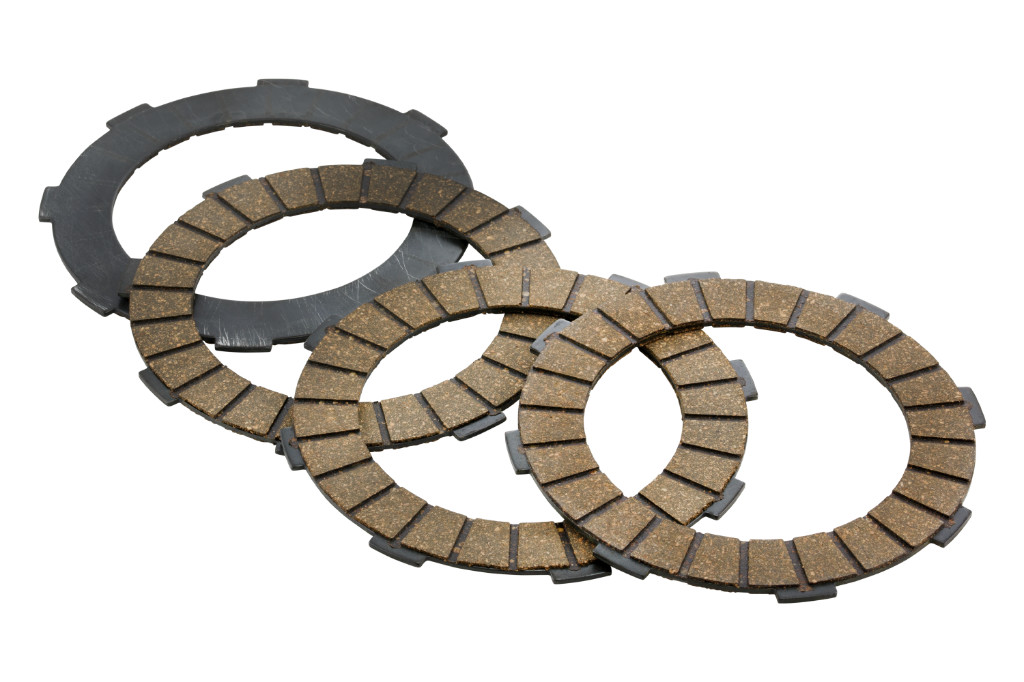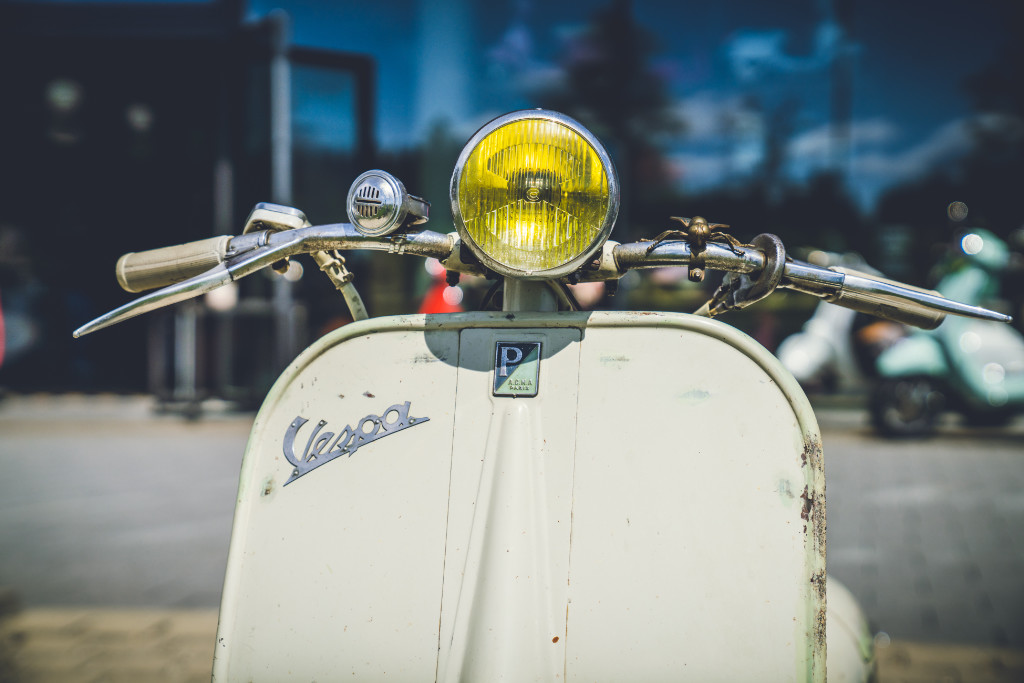“Is it a manual or an automatic?”: This question is probably still one of the most frequently asked by family or friends when buying a new car. While the choice is still there for cars, it has not been up for discussion for Vespas for quite some time. Whereas in the past it was mainly manual gearshifts that were used, since the turn of the millennium almost all scooters delivered have been equipped with a centrifugal clutch that no longer requires gearshifts.
Task and function of the clutch
The task of the clutch is to establish the connection between the engine and the gearbox or to disconnect this connection accordingly. During start-up or shifting into another gear, it is necessary to disconnect the connection between the two components to ensure smooth operation. Contrary to the popular belief that modern vehicles with automatic transmissions drive without a clutch, they also need a clutch. The only significant difference with scooters is the fact that there are no gears. The “shifting” is done by the variomatic. Acceleration is possible at all with the help of the V-belt, which runs in the variator and the converter. Centrifugal forces push the weights in the variator further and further outwards, causing the V-belt to move further and further outwards.
In the traditionally hand-geared models, the whole process works differently. There, the transmission shaft is firmly connected to the clutch disc. The latter, on the other hand, lies between the flywheel and the pressure plate attached to it. If the clutch lever on the handlebar is not pulled, there is a fixed connection between the three components. As soon as the clutch lever is pulled, the surface between the clutch linings spreads, separating the pressure plate from the other components. This allows another gear of the transmission to be engaged. Furthermore, this process takes place in an oil bath on the Vespas. This is why the clutch of the historical models is also colloquially referred to as an “oil bath clutch”. This so-called wet clutch has the advantage over a dry clutch of better heat dissipation and protection against environmental influences such as water or dirt.
Clutch maintenance
Regular clutch maintenance should be a matter of course, especially for all manual Vespas. First of all, the clutch cable(s) should be checked to ensure that they have sufficient pre-tension and do not get caught in the casing. The clutch linings should also be checked. If they are worn, the clutch will slip and the engine will idle. To remove the clutch basket gently, a special puller is needed, which is available at a reasonable price from the experts at SIP Scootershop.
The new clutch facings should ideally be soaked in an oil bath for one night before installation. Furthermore, the spring in the clutch basket must be compressed by hand in order to be able to remove the locking ring that holds the locking plate. The old pads can then be removed and replaced with the new ones. Reassembly is then carried out in reverse order.

Regular maintenance is also recommended for the newer models with variomatic drive and centrifugal clutch. In particular, the weights of the variator should be replaced, as these are subject to high loads and constant wear. It is important to only use new parts that have exactly the same weight. Here, single grams can make a big difference. Although not directly related to the clutch, the belt should also be checked carefully. A broken belt can have catastrophic effects on the drive unit and the crankshaft. Due to constant abrasion, the belt loses its width and durability over time. With this spare part, it is better to change it once too often than too little.
All other clutch spare parts, from springs, cables and small parts to entire clutch baskets, are also available in a wide variety of designs from the SIP Scootershop in Landsberg am Lech. From inexpensive replacement parts to high-end products, there is something for every Vespa clutch.
Ultimately, as with cars, it is a question of faith whether a Vespa is manual or automatic. Both systems have their raison d’être and ensure that Vespa riders can enjoy the Italian lifestyle on two wheels. No matter whether in a nostalgic way or in the modern way.




hello I have what I think is clutch problems on my vespa LX125 2008 model as soon as I start the scooter it Is driving in gear and I have difficulty pulling the scoot backwards out of garage I turn off it releases do you think it’s clutch related or more towards the variator and rollers or the drive belt please I have been given the scooter so unsure of the history and when mileage has been done thank you